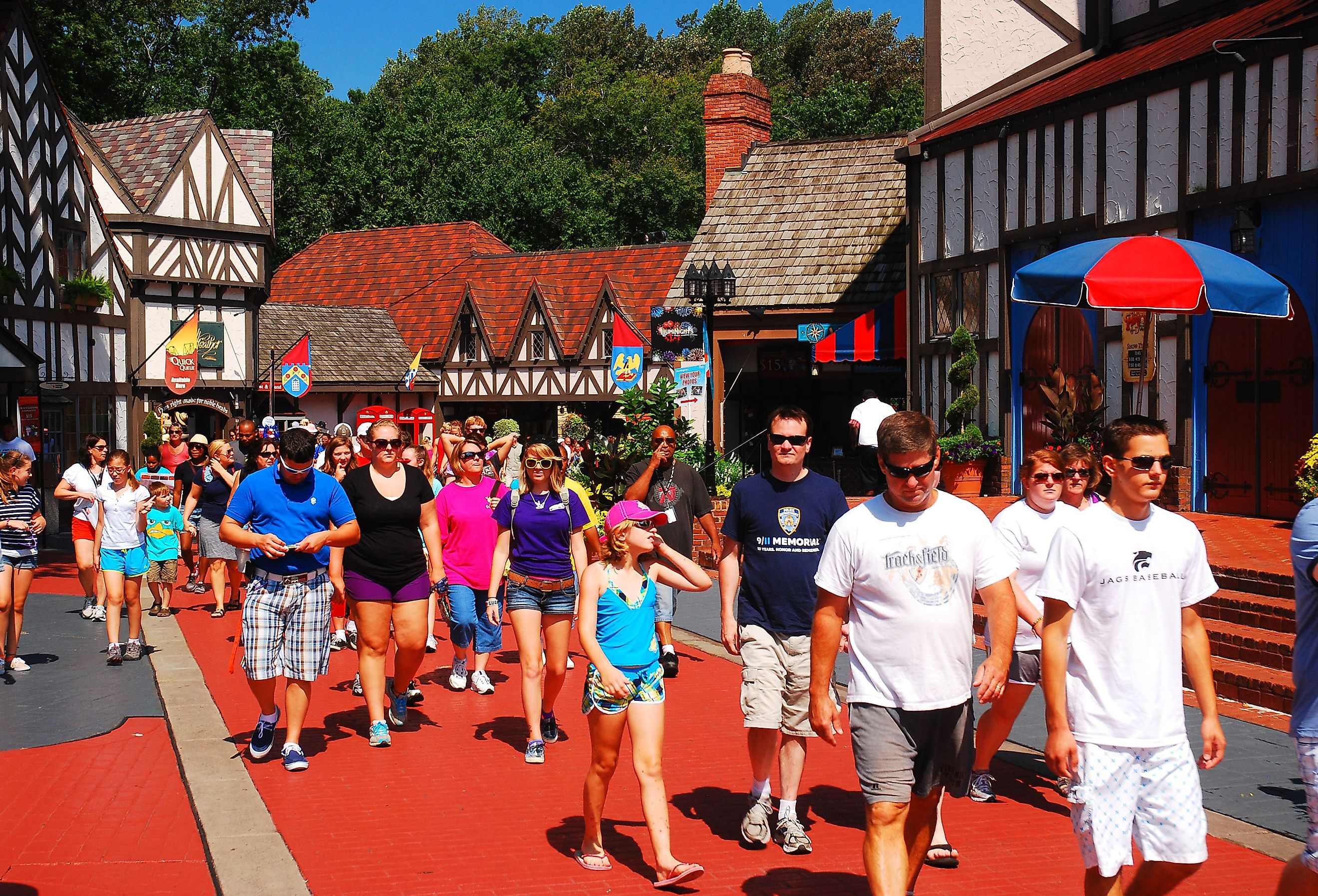
These Historic Towns in Virginia Are Worth Exploring
With its sun-dappled Atlantic beaches and majestic Appalachian mountain ranges, the state of Virginia is a geographical marvel, dependably drawing more than 100 million tourists from around the country each year.
However, Old Dominion, which is Virginia's official nickname, has much more to offer visitors than its balmy, temperate climate and gorgeous scenery. Many out-of-staters make the trek to Virginia specifically to experience its historically significant towns and cities. But because the state boasts such a wealth of heritage-rich locales, choosing which ones to visit can prove to be a bit of a daunting task—especially for those with limited vacation time. As a means of whittling down the options to a more manageable number, learn more about the historic towns in Virginia most worth exploring, with each entry accompanied by a rundown of major attractions. So, dust off your tricornered hat, grab your powdered wig, and prepare for an exciting journey back in time through America’s formative first few centuries!
Jamestown
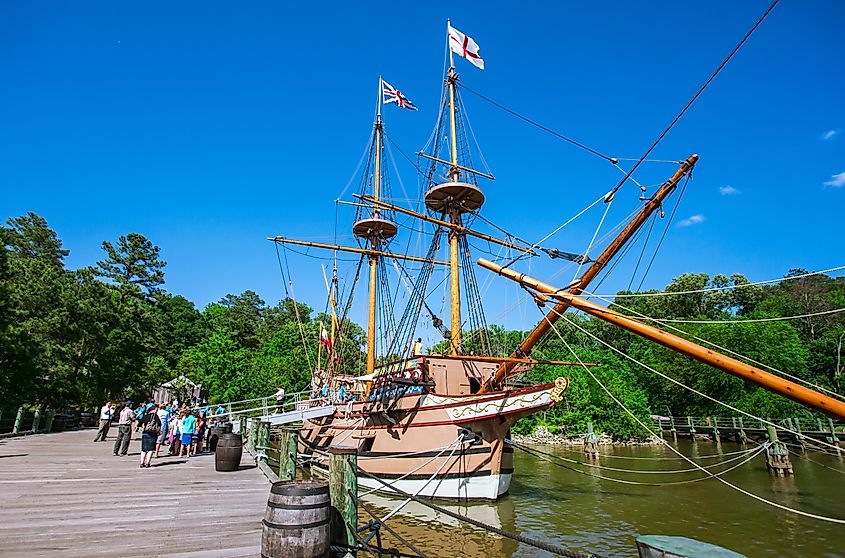
Virginia is home to the first permanent English settlement in North America. Originally known as James Fort, but later rechristened James Towne and even later modernized to simply Jamestown, the colony was chartered in 1606 by King James I of the United Kingdom. Jamestown served as the colonial capital from 1616 until 1699, when it was totally abandoned.
Today, the land where the colony formerly sat serves as a large national monument administered by The National Park Service as part of Colonial National Historical Park. There is a long-term archaeological excavation underway on portions of the site, but visitors are encouraged to tour what is now known as Historic Jamestowne. Some highlights include the original Statehouse, the statue of Pocahontas, the statue of John Smith, and the award-winning Voorhees Archaearium where more than 4,000 authentic colonial-era artifacts are on display. Guests with small children will want to check out the The Ed Shed, an interactive and family-friendly space featuring educational, hands-on activities.
And if a full day of revelling in the 17th century way of life leaves you thirsty, be sure to stop by the Billsburg Brewery situated just outside Colonial National Historical Park at the Jamestown Yacht Basin and have a pint of one of their many fine house-conceived and house-brewed beers.
Williamsburg
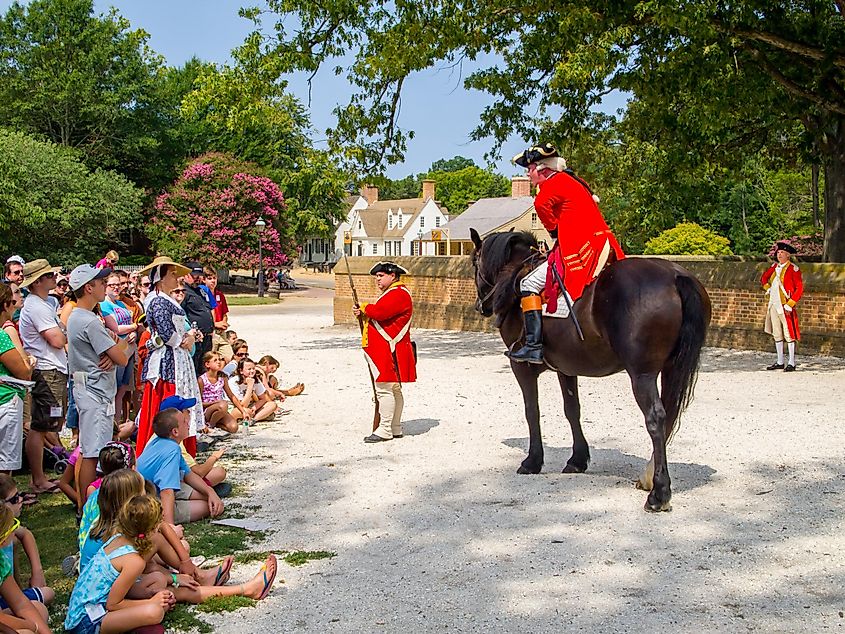
Founded in 1632 as Middle Plantation, this Virginia town formally changed its name to Williamsburg in 1699 when it took up the mantle as capital of the English colony after Jamestown was vacated. It kept this title throughout most of the 1700s, and as such, became the center for Virginia's political activities in the run-up to and during the American Revolution.
These days, Williamsburg is a thriving town, home to 15,425 people. Its economy largely revolves around tourism, which is primarily dependent on the attraction of Colonial Williamsburg, a 301 acre living museum and private historical foundation dedicated to presenting visitors with a three-dimensional colonial experience. Colonial Williamsburg features several hundred fully restored buildings, as well as a retinue of professional actors playing the parts of noteworthy historical figures and everyday people from the past. Some of the most famous locations in the living museum are the old Capitol, the public gaol (or, in today's parlance, public jail), the market square, the play house stage, the public hospital of 1773, Wetherburn's Tavern, and the Historic Gardens and Arboretum.
Williamsburg is also home to the College of William & Mary (W&M), which is the second oldest institution of higher learning in the United States. Established in 1693, W&M, as it is usually abbreviated, is often called "the Alma Mater of the Nation" based on its reputation for educating several early American statesmen, such as Thomas Jefferson, James Monroe, John Tyler, Henry Clay, and John Marshall.
Yorktown
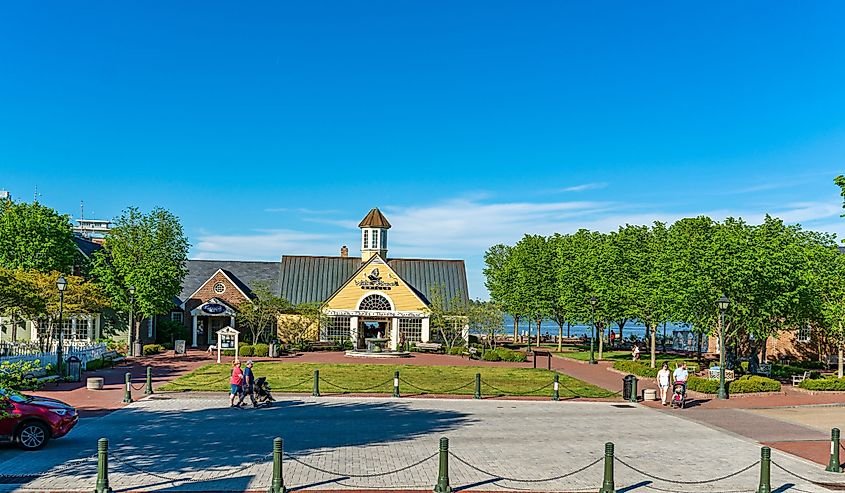
Together with Jamestown and Williamsburg, Yorktown comprises an area of Virginia known as the Historic Triangle. The settlement was established in 1682 and has the distinction of being one of the eight original shires of colonial Virginia. Even though its population is a mere 195 souls, it remains to this day the county seat of York County.
Yorktown figures prominently in the annals of American History. It is perhaps most famous as the site of the Battle of Yorktown during the Revolutionary War. After the defeat of the British forces, it is also where British General Charles Cornwallis surrendered to American General George Washington and the French expeditionary fleet on October 19, 1781. This event effectively put an end to the war (though it wouldn't officially be over until the signing of the Treaty of Paris more than one year later). Yorktown also played a crucial role as a strategic Atlantic port during the Civil War, serving to supply both the Union and Rebel armies depending on who held control of the town at the time.
This remarkable historical legacy is chronicled in multiple museums and monuments found throughout the village. Chief among these are the American Revolution Museum at Yorktown, Yorktown Battlefield, the American Revolutionary War Monument, and the York County Historical Museum. For fans of the gothic and macabre, Yorktown Ghost Walks provides guided candlelit tours of the village's many allegedly haunted sites and buildings.
Lexington
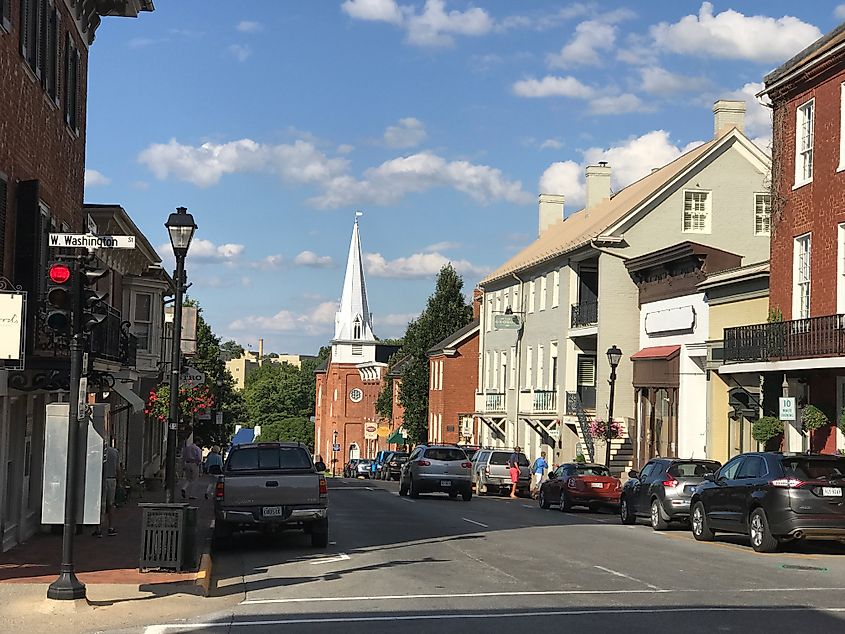
Although named after the city in Massachusetts that served as the flashpoint for the American Revolution, Lexington, Virginia's legacy has a great deal more to do with the Civil War. The town of 7,320 souls contains quite a few landmarks pertaining to the War Between the States, and specifically relating to high-ranking officers of the Confederate army. General Robert E. Lee and General Thomas 'Stonewall' Jackson are both buried in Lexington, the latter having maintained a residence in the town which was converted into a museum in 1979.
Sam Houston, an instrumental figure in the establishment of the short-lived Republic of Texas (he helped organize the provisional government, served as as a general in its army, and became its first and third president), as well as a one-time governor of Tennessee, and United States Senator was also born very near Lexington. The Sam Houston Wayside, which is a 38,000 pound pink granite monument commemorating his place of birth in Rockbridge County, Virginia draws a healthy number of curious tourists from the Lone Star State.
Looking for the perfect way to relax after a long and informative day of sight-seeing in Lexington? The town is also home to the legendary Hull's Drive-In. This family- and pet-friendly outdoor theater proudly touts itself the country's first community-owned, non-profit drive-in. And because Hull's Drive-In is originally a product of the early 1950s and great pains have been taken to keep it styled as such, it provides a glimpse into a slightly more modern era in American history.
Charlottesville

Affectionately referred to as either "C'Ville" or "Hoo-Ville" by locals, Charlottesville, Virginia has deep ties to three former Presidents of the United States. James Monroe made his home in the town, and James Madison hailed from the nearby community of Orange located only 26 miles to the northeast. Both the estate of the former, known as Highland, and the estate of the latter, known as Montpelier, have been converted into museums showcasing the lives and accomplishments of these early chief executives and their families. Each are curated by expert historians, and each are open to the general public.
But perhaps the most beloved son of Charlottesville is Thomas Jefferson. Monticello, his legendary mansion and tobacco plantation turned presidential library and museum, is not only a registered National Historic Landmark, but also a UNESCO World Heritage Site. The museum boasts an extensive and varied collection of objects including art, furnishings, personal items, books, and manuscripts. Interestingly, Jefferson was masterful architect and designed the main house himself, re-designing and re-building it multiple times over the course of his life. His remains are buried on the grounds.
Another of Charlottesville's historic attractions is the University of Virginia, also founded by Thomas Jefferson. Additionally, he served as the architect for its earliest buildings, as well as conceiving the content for its original courses. UNESCO has also designated the University of Virginia as a World Heritage Site.
Appomattox
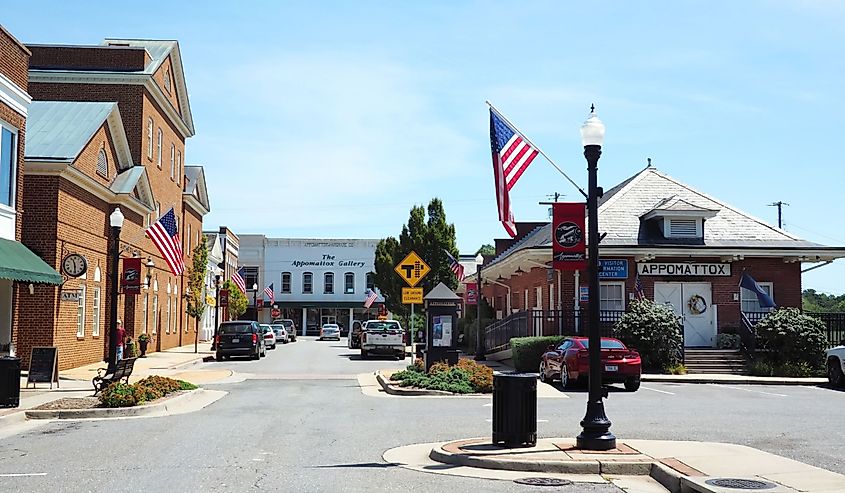
The town of Appomattox, Virginia has one definitive claim to fame: namely, the events of April 9, 1865. That morning, after having been cornered by Union troops, the Army of Northern Virginia mounted a failed last-ditch attack in an attempt to escape to open territory. Later that day, in acknowledgment of their defeat, Confederate General Robert E. Lee surrendered his forces to Union General Ulysses S. Grant inside McLean House in a section of the town called Appomattox Court House. While this important event did not constitute the official end of the Civil War, it did presage the inevitable end of the conflict and serve as a powerful symbol of pending victory for the Northern States. Almost 100 years later, the site of Appomattox Court House was transformed into a National Park and living museum. Since then, visitors have come from far and wide to experience the breadth of this war-time village, frozen in time in the spring of 1865, and featuring fully preserved homes, businesses, a tavern, and a rebuilt and historically accurate version of McLean House.
In the decades after the Civil War, the town proper developed away from Appomattox Court House in the directions south and west, but it never lost its intrinsic connection with what transpired on that fateful day, or to the Civil War more broadly. In that spirit, Appomattox is home to the American Civil War Museum, an impressive structure housing displays, photographs, documents, and more than 400 authenticated artifacts.
Appomattox also contains the Carver Price Legacy Museum, which honestly chronicles the experiences of Black Americans throughout various eras in US history, as well as Red Hill, the Patrick Henry National Memorial, which seeks to honor the memory one of the nation's fieriest founding fathers and the originator of the phrase "Give me liberty, or give me death."
Fredericksburg

Another Virginia town closely associated with an early president, Fredericksburg revels in the role it occupied in the life of George Washington. Many locations relating to Washington have been preserved in the town, including some dealing with his mother, Mary, who spent many years in Fredericksburg. Mary Washington House offers a biographical glimpse into the life of this American matriarch, and the nearby Mary Washington Monument marks the site of her burial. George Washington's Ferry Farm, where the future general and first commander-in-chief spent many of his formative years, is also a popular attraction.
Situated halfway between Washington, DC (capital of the United States) and Richmond, Virginia (capital of the Confederate States), Fredericksburg played a substantial part in what Walt Whitman called "the War of Attempted Secession." The Battle of Fredericksburg and the Second Battle of Fredericksburg were both fought within its municipal boundaries. The Battle of the Wilderness and the Battle of Spotsylvania Court House also took place nearby. All four of these clashes are memorialized in Fredericksburg and Spotsylvania National Military Park, a green space comprising 8,374 acres and featuring monuments, a large cemetery, old field cannons, informative plaques, and original buildings from the Civil War era.
Fast forwarding through time, a somewhat more carefree period in American history is captured in one of Fredericksburg's most celebrated recreational spots; Reclaim Arcade. For an all-day admission price of only $15, this throwback to the 1980s invites guests to hop on any one of its vast array of pinball tables and full-sized video game terminals and try to post a high score!
"Virginia is for lovers," or so says one of the state's unofficial slogans, implying that its beautiful landscapes and near-ideal weather make it a premiere destination for couples seeking the thrill of romance. Beyond that, though, Old Dominion is also a place for lovers of history. Between the preserved estates of numerous presidents and founding fathers, the battlefields of the Revolutionary and Civil Wars, and the living museums dedicated to authentically showcasing everyday life throughout various time periods, Virginia is veritably bursting with historicity. For history buffs or anyone with even a passing interest in the notable events of America's past, exploring these towns is more than worth the time.











